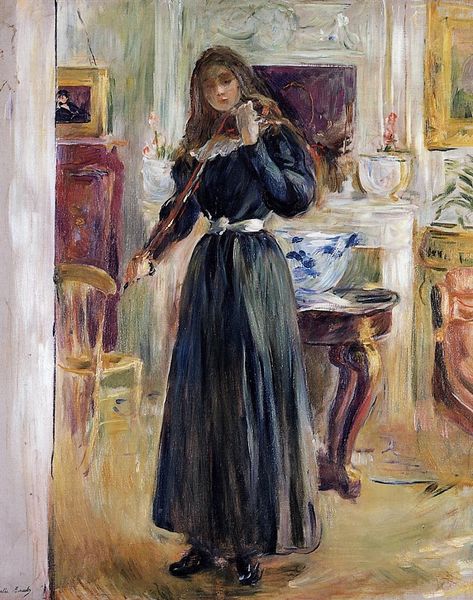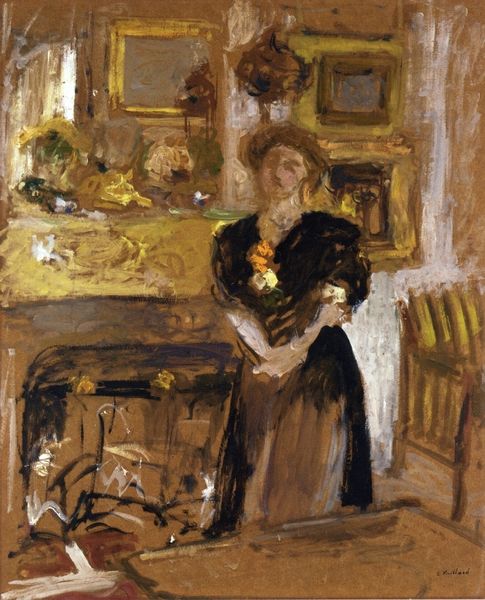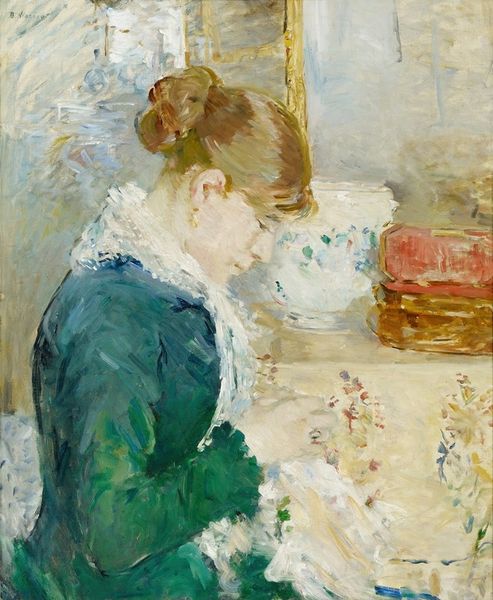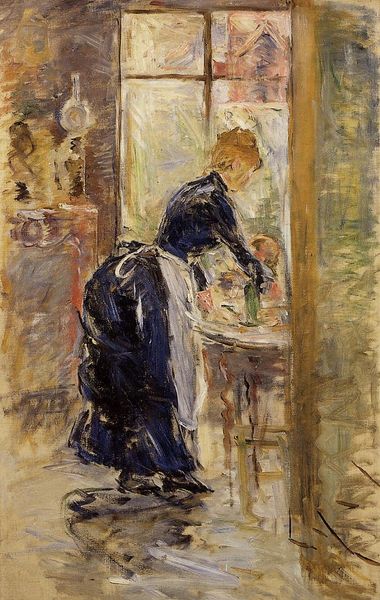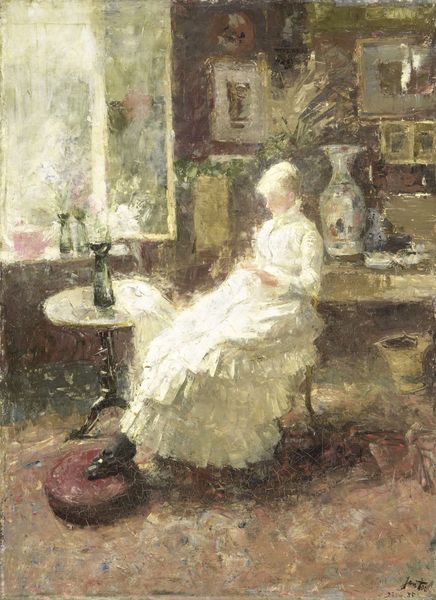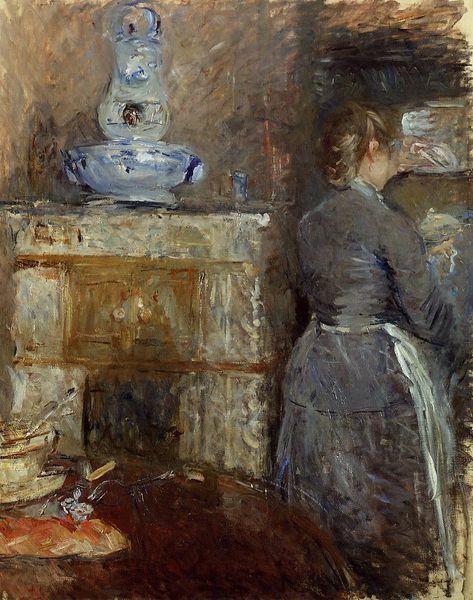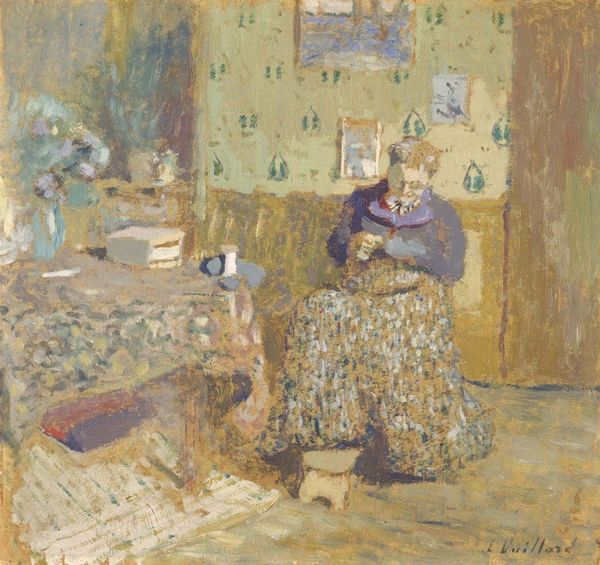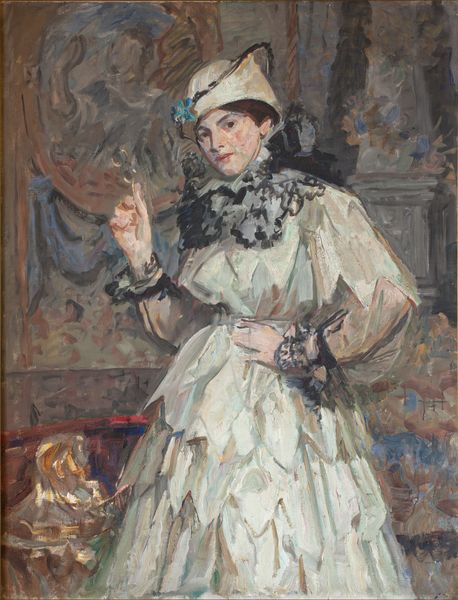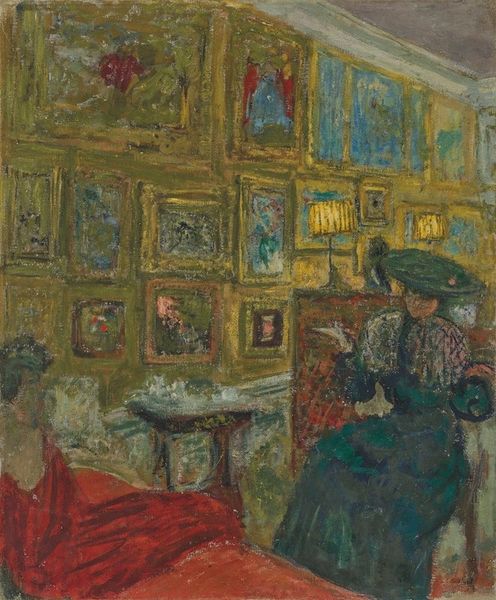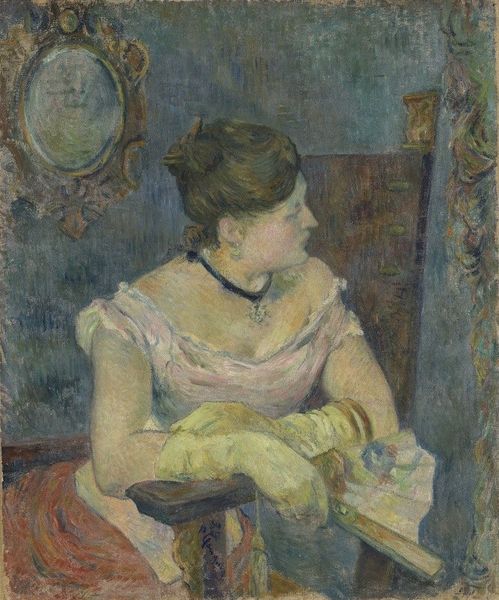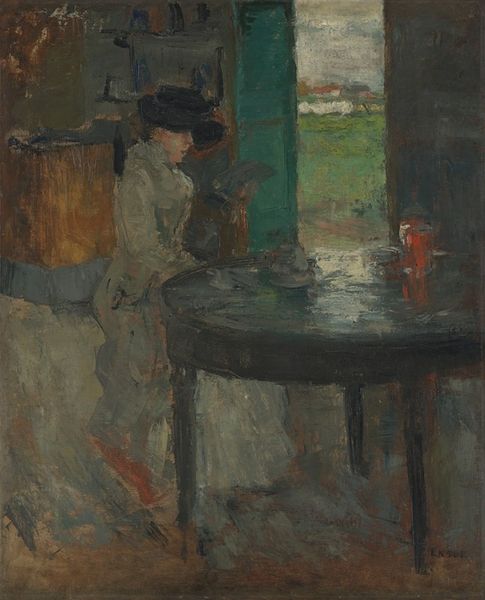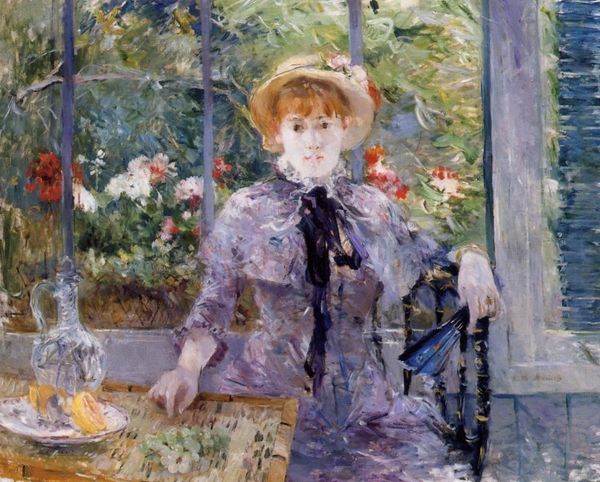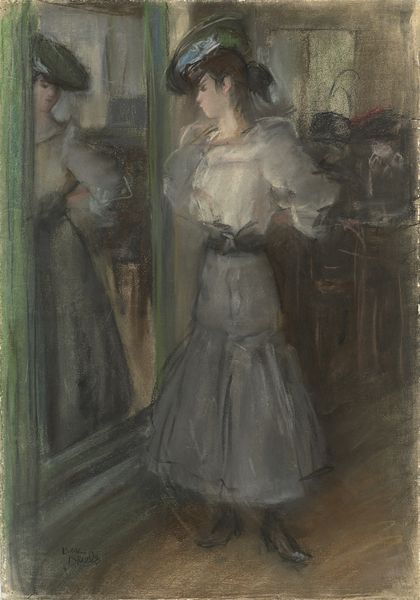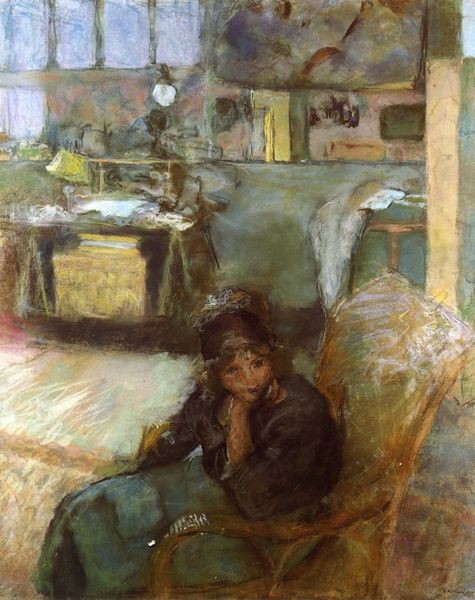
painting, oil-paint
#
portrait
#
figurative
#
painting
#
impressionism
#
oil-paint
#
figuration
#
oil painting
#
painterly
#
genre-painting
Copyright: Public Domain: Artvee
Curator: Standing before us is Berthe Morisot's "In the Dining Room," completed in 1886 using oil paints. Editor: The overwhelming impression I get is one of domestic tranquility, albeit a very painterly, almost unfinished tranquility. Curator: Note how Morisot deftly uses brushstrokes to create a sense of light and air. The blurring of edges, so typical of Impressionism, gives the scene a certain…ephemerality. The textures of the fabrics and surfaces are quite visible, emphasizing their materiality. The loose application makes one aware of the painting's making. Editor: For me, the image of the woman and the subtle placement of the dog evoke traditional symbols of fidelity and domesticity, a kind of serene feminine space. Is she pausing a moment amidst her chores? I am interested in the significance of her placement at the heart of the home; its psychological importance throughout different cultures and eras. Curator: What I find fascinating is Morisot’s subtle rebellion against societal expectations. Here she portrays domestic labor, yet her style elevates it. The quick strokes and visible process make it a comment on the labor involved, and a display of skill, almost challenging what defined ‘high art’. One might read her visible brushstrokes as her claiming authority within these spaces and about what she, a woman, can represent. Editor: Indeed. Perhaps the painting speaks to a sense of feminine presence within a patriarchal structure, her place secured through gentle representation rather than outright revolution, speaking quietly of duty and expectation. Consider the layering of imagery: table and window, female subject. The layering of reality is interesting here; each plane echoes with subtle visual queues. The dog at the base mirroring the subject's watchful glance is fascinating. Curator: The contrast in the application of the paint in different sections interests me, where the detail around the window outside feels less finished and so differs from the texture in the interior around the standing woman. Editor: Reflecting on the painting, one appreciates how its serene subject communicates layers of symbolic meaning relating to the cultural expectation of women. Curator: And I’m left considering how Impressionism, usually associated with outdoor scenes, tackles the interior domestic sphere.
Comments
No comments
Be the first to comment and join the conversation on the ultimate creative platform.
